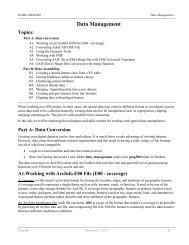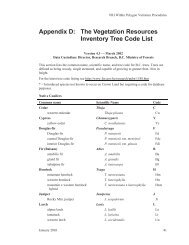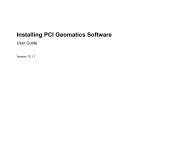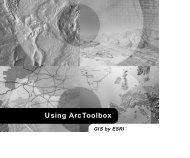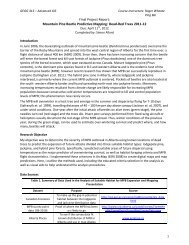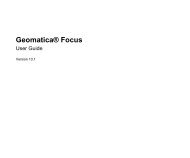Understanding Map Projections
Understanding Map Projections
Understanding Map Projections
You also want an ePaper? Increase the reach of your titles
YUMPU automatically turns print PDFs into web optimized ePapers that Google loves.
WHAT IS A MAP PROJECTION?<br />
Whether you treat the earth as a sphere or a<br />
spheroid, you must transform its three-dimensional<br />
surface to create a flat map sheet. This mathematical<br />
transformation is commonly referred to as a map<br />
projection. One easy way to understand how map<br />
projections alter spatial properties is to visualize<br />
shining a light through the earth onto a surface,<br />
called the projection surface. Imagine the earth’s<br />
surface is clear with the graticule drawn on it. Wrap<br />
a piece of paper around the earth. A light at the<br />
center of the earth will cast the shadows of the<br />
graticule onto the piece of paper. You can now<br />
unwrap the paper and lay it flat. The shape of the<br />
graticule on the flat paper is very different than on<br />
the earth. The map projection has distorted the<br />
graticule.<br />
A spheroid can’t be flattened to a plane any easier<br />
than a piece of orange peel can be flattened—it will<br />
rip. Representing the earth’s surface in two<br />
dimensions causes distortion in the shape, area,<br />
distance, or direction of the data.<br />
A map projection uses mathematical formulas to<br />
relate spherical coordinates on the globe to flat,<br />
planar coordinates.<br />
Different projections cause different types of<br />
distortions. Some projections are designed to<br />
minimize the distortion of one or two of the data’s<br />
characteristics. A projection could maintain the area<br />
of a feature but alter its shape. In the graphic below,<br />
data near the poles is stretched. The diagram on the<br />
next page shows how three-dimensional features are<br />
compressed to fit onto a flat surface.<br />
The graticule of a geographic coordinate system is projected onto a cylindrical projection surface.<br />
Projected coordinate systems • 11




